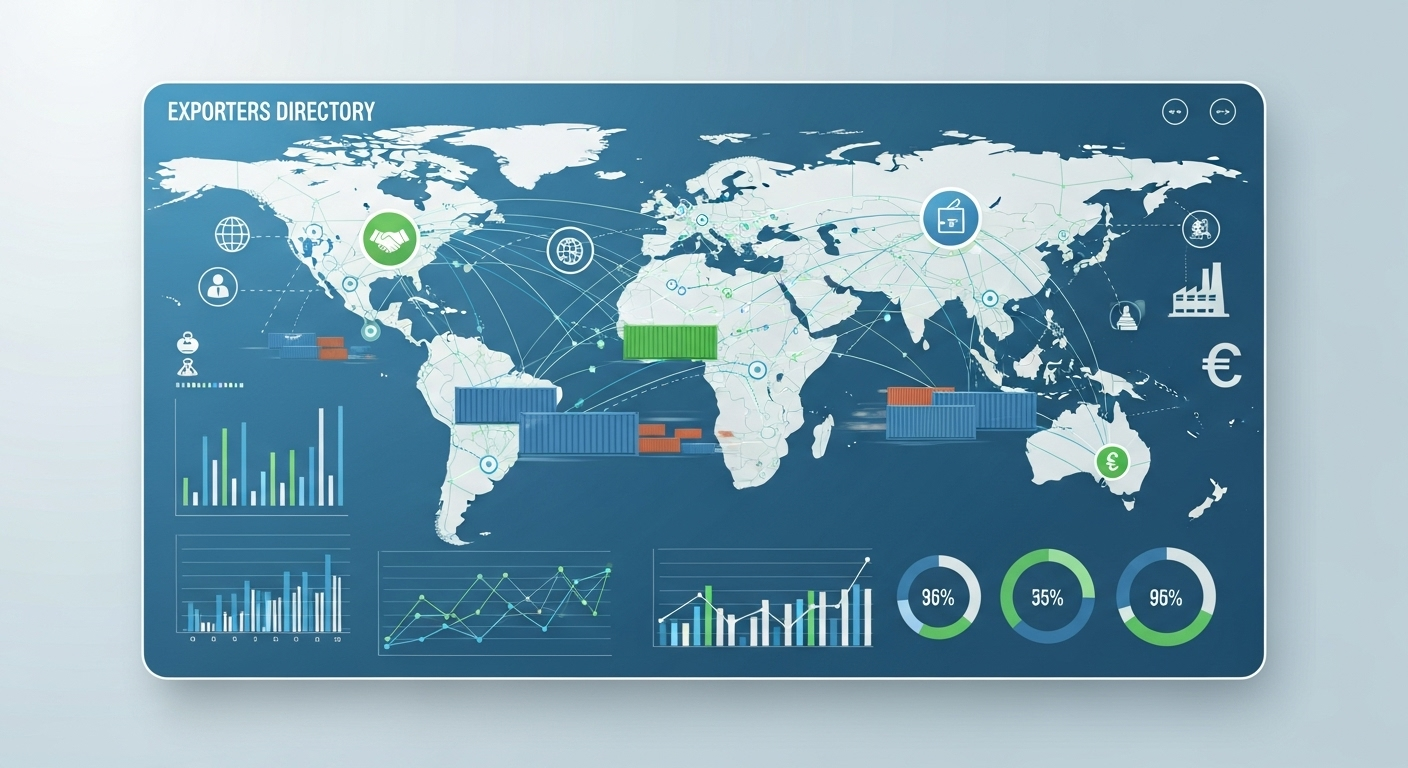How to Research Export Markets: A Complete Guide for Small Businesses

Understanding Export Market Research Fundamentals
Export market research is the foundation of successful international trade expansion. Before investing time and resources into new markets, businesses must conduct thorough research to identify opportunities, understand local regulations, and assess competitive landscapes.
Effective market research reduces risks, optimizes resource allocation, and increases your chances of international success. This comprehensive guide will walk you through proven methodologies used by successful exporters worldwide.
Step 1: Define Your Export Objectives and Criteria
Before diving into market analysis, establish clear objectives for your export expansion:
- Revenue Goals: Set specific financial targets for international sales
- Market Size Requirements: Determine minimum market size needed for profitability
- Geographic Preferences: Consider time zones, cultural similarities, and language barriers
- Risk Tolerance: Assess your comfort level with political and economic instability
- Resource Constraints: Evaluate available budget, time, and personnel for market entry
Step 2: Conduct Primary Market Analysis
Market Size and Growth Potential
Use these reliable data sources to assess market opportunities:
- World Bank Data: Access comprehensive economic indicators and growth forecasts
- UN Comtrade Database: Analyze international trade statistics and import/export data
- Industry Reports: Purchase sector-specific reports from Euromonitor, IBISWorld, or similar providers
- Government Trade Offices: Leverage resources from your country's trade promotion agencies
- Chamber of Commerce: Connect with local and international chambers for market insights
Key Metrics to Track:
- Total Addressable Market (TAM) size
- Annual market growth rates
- Import volume trends for your product category
- Consumer spending patterns
- Economic stability indicators
Step 3: Analyze Your Competition
Understanding your competitive landscape is crucial for positioning and pricing strategies:
Competitor Identification:
- Research existing suppliers in your target market
- Identify both local and international competitors
- Analyze their market share and positioning
- Study their pricing strategies and value propositions
Competitive Analysis Framework:
- Product Quality: Compare features, specifications, and quality standards
- Pricing Structure: Analyze pricing models and cost positioning
- Distribution Channels: Understand how competitors reach customers
- Marketing Approach: Study their promotional strategies and messaging
- Strengths and Weaknesses: Identify gaps you can exploit
Step 4: Understand Regulatory and Legal Requirements
Compliance is critical for successful market entry:
Essential Regulatory Research:
- Import Regulations: Research tariffs, quotas, and import restrictions
- Product Standards: Understand certification requirements and quality standards
- Labeling Requirements: Learn about mandatory labeling and packaging rules
- Documentation: Identify required export/import documentation
- Tax Implications: Understand VAT, duties, and tax obligations
Key Resources:
- Target country's customs and trade websites
- International trade lawyers specializing in your target market
- Industry associations with international expertise
- Trade promotion agencies and export assistance programs
Step 5: Cultural and Consumer Behavior Analysis
Cultural understanding directly impacts product acceptance and marketing effectiveness:
Cultural Factors to Research:
- Communication Styles: Direct vs. indirect communication preferences
- Business Practices: Meeting etiquette, decision-making processes, and relationship building
- Consumer Preferences: Color preferences, design aesthetics, and functionality priorities
- Religious and Social Considerations: Factors that might affect product acceptance
- Language Requirements: Translation needs and local language preferences
Research Methods:
- Conduct surveys with potential customers
- Organize focus groups or product testing sessions
- Partner with local market research firms
- Attend industry trade shows in target markets
- Engage with local distributors and business partners
Step 6: Assess Distribution and Logistics
Efficient distribution is crucial for market success:
Distribution Channel Analysis:
- Direct Sales: Evaluate feasibility of selling directly to end customers
- Distributors: Research potential distribution partners and their capabilities
- Online Platforms: Assess e-commerce opportunities and requirements
- Retail Networks: Understand retail landscape and partnership opportunities
Logistics Considerations:
- Shipping costs and transit times
- Port infrastructure and customs efficiency
- Local warehousing and fulfillment options
- Last-mile delivery capabilities
- Returns and customer service logistics
Step 7: Financial and Risk Assessment
Comprehensive financial analysis ensures sustainable market entry:
Financial Projections:
- Market entry costs and timeline to profitability
- Revenue forecasts based on market size and penetration rates
- Operating costs including marketing, distribution, and compliance
- Currency exchange risks and hedging strategies
- Working capital requirements and cash flow projections
Risk Assessment:
- Political Risk: Government stability and policy changes
- Economic Risk: Currency volatility and economic indicators
- Commercial Risk: Customer payment behaviors and collection challenges
- Operational Risk: Supply chain disruptions and quality control issues
Step 8: Validate Your Research with Market Testing
Before full market entry, validate your research with controlled testing:
Market Validation Strategies:
- Pilot Programs: Launch limited product trials with select customers
- Trade Shows: Participate in industry exhibitions to gauge market response
- Online Testing: Use digital marketing to test demand and pricing sensitivity
- Partnership Pilots: Work with local partners for small-scale market tests
- Customer Interviews: Conduct in-depth interviews with potential buyers
Step 9: Create Your Market Entry Strategy
Based on your research findings, develop a comprehensive market entry plan:
Strategic Components:
- Market Prioritization: Rank markets based on opportunity and risk assessment
- Entry Method: Choose between direct export, partnerships, or local presence
- Timeline: Develop realistic timelines for market entry milestones
- Budget Allocation: Assign resources across marketing, distribution, and operations
- Success Metrics: Define KPIs to measure market penetration and success
Step 10: Implement Ongoing Market Monitoring
Market research is an ongoing process that requires continuous monitoring:
Monitoring Systems:
- Set up Google Alerts for market news and competitor activities
- Establish regular customer feedback collection processes
- Monitor economic indicators and regulatory changes
- Track competitor pricing and product developments
- Measure your market share and customer satisfaction regularly
Common Market Research Mistakes to Avoid
Learn from these common pitfalls:
- Relying on Outdated Data: Always use the most current information available
- Ignoring Cultural Nuances: Cultural misunderstandings can derail market entry
- Underestimating Costs: Include all hidden costs in your financial projections
- Focusing Only on Market Size: Consider market accessibility and competition intensity
- Skipping Legal Research: Compliance issues can be costly and time-consuming
- Not Validating Assumptions: Test your hypotheses with real market data
Tools and Resources for Export Market Research
Free Government Resources:
- Export.gov (US) - Comprehensive export assistance and market research
- UK Trade Info - Market intelligence and export opportunities
- Canada's Trade Commissioner Service - International market insights
- Australia's Austrade - Export market research and assistance
Commercial Research Platforms:
- Euromonitor Passport - Global market research database
- IBISWorld - Industry reports and market analysis
- Statista - Market data and consumer insights
- GlobalData - Industry intelligence and forecasting
Industry-Specific Resources:
- Trade associations for your specific industry
- Industry magazines and trade publications
- Professional networks and LinkedIn groups
- Industry consultants and export specialists
Taking Action: Your Next Steps
Effective export market research is an investment in your international success. Start with these immediate actions:
- Define Your Criteria: Establish clear objectives and success metrics
- Start with Desk Research: Use free government and online resources
- Prioritize 2-3 Markets: Focus your initial research on the most promising opportunities
- Validate with Primary Research: Conduct surveys, interviews, or market testing
- Create a Go-to-Market Plan: Develop specific strategies for your top-ranked markets
Conclusion: Research Your Way to Export Success
Thorough market research is the difference between successful international expansion and costly market entry mistakes. By following this systematic approach, you'll make informed decisions, reduce risks, and increase your chances of export success.
Remember that market research is an ongoing process. Markets evolve, regulations change, and new opportunities emerge. Stay vigilant, keep learning, and adapt your strategies based on real market feedback.
Ready to expand internationally? Start your export market research today using this comprehensive guide, and take the first step toward building a successful global business.
For more expert insights on international trade and export strategies, explore our comprehensive resource library and connect with successful exporters on ExportDash.


